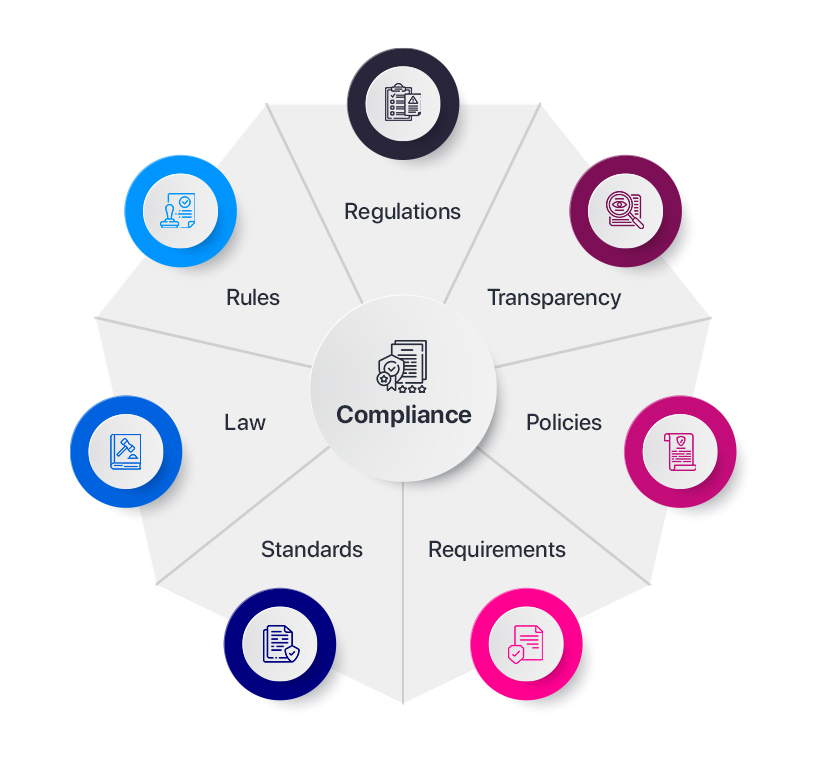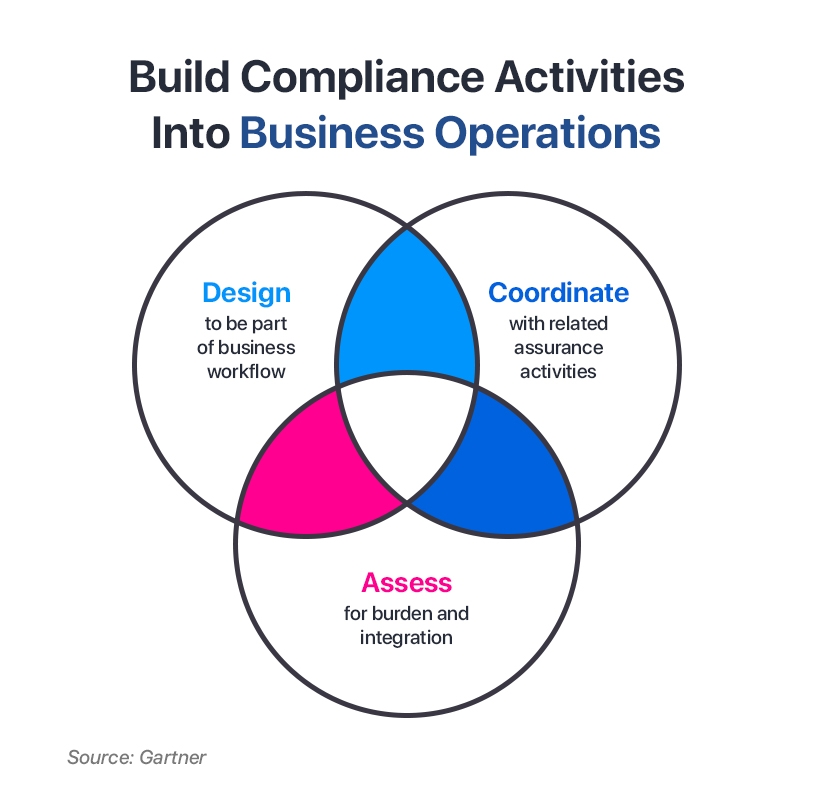There is an intrinsic toughness that traditional banks face concerning compliance management.
- The frequent policy changes need time and effort to adapt and adopt (once the impact assessment studies are completed).
- Often, incomplete automation or sub-optimal centralization in compliance processes delay response, measurement, and reporting.
- Absence of a single source of truth in data across the organization.
- Inefficiencies in vendor management processes and poor integration across siloed systems.

The case for automating compliance management or Reg Tech.
When leading FIs use automated compliance solutions, their chances to regain or establish their competitive advantage increase. While the success of business operations in these changing times relies on satisfying customer expectations, there are significant rules (financial and non-financial) and challenges. This blog highlights a few of them, along with practical solutions.
Three Key Challenges in Regulatory Compliance and Solutions.
Tackling Complexity.
Many banks face challenges that may look easy but reveal vast complexities when deciphered. Specifically for trans-continental operations, the sheer scale (and different legislation for different geographies) brings a layer of nuances that creates rifts between understanding and action between experts and operators. More often than not, this delays as the absence of a collaborative attitude can exaggerate the difficulties. It is here that Reg Tech plays a crucial role by prioritizing and operationalizing risk response and compliance processes. As more data is collected and data silos are broken down, the automation workflows bring intelligent decisioning, boosting overall productivity and efficiency.

Beyond Manual with Agile.
More than a few compliance departments in banks are abandoning legacy tools – excel, email, or even paper-pen. Without automation or workflow tools, the task of proactively assessing risks and adhering to compliance regulations is formidable. The end outcome is protracted, the quality is suspect, and the FI’s exposure to penalties and fines is dangerously high. One most the shift over the last decade has been agile product and technology development. Agile business processes across compliance, risk, and governance practices allow teams to accelerate problem-solving and decision-making and create powerful workflows to tackle new challenges.
Organizational empowerment through no-code development.
In recent years, risk and compliance functions are assuming an integrated approach. More business functions are taking charge of their individual regulatory compliance needs. As the central compliance team ensures business teams face as little complexity as possible, it also has to role-model that adhering to regulations be seen as an opportunity to get more competitive in the marketplace.
Automating business processes, workflows, approvals, and reports is “compliant” by design. One powerful way to achieve this is low code and no code development. The no-code automation choices offer teams dramatic ways to improve the quality of compliance activities, and that too, on a substantial scale. This addresses many ad hoc requirements and reduces precious personnel workloads. Manual interventions are brought down, and these automations’ upside is elevated quality (without human errors).
In conclusion
Due to the chaos around the world in 2020 and 2021, many new risks and compliance management challenges have come up. There are also big structural problems that many FIs face when it comes to risk and compliance. These problems need long-term solutions. We will increasingly see risk and compliance technology systematically treating process vulnerabilities. The emphasis will include problem-solving, managing rising costs of risk and ensuring compliance, and responding quickly to the frequent changes in regulatory frameworks to arrest the inefficiency of operations.











